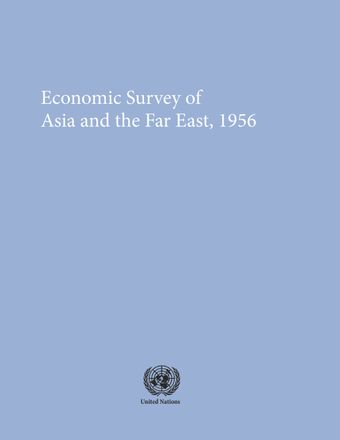Philippines

- Author: United Nations Economic and Social Commission for Asia and the Pacific
- Main Title: Economic and Social Survey of Asia and the Far East 1956 , pp 155-161
- Publication Date: December 1956
- DOI: https://doi.org/10.18356/0503b45d-en
- Language: English
The accelerated tempo of economic development, financed by government borrowing in the public sector and credit expansion in the private sector, in late 1955 reversed the deflationary trend that had prevailed in the Philippines in the preceding three or four years. Greater expenditure resulted at first in substantial import expansion and considerable depletion of foreign exchange reserves, and later, after the tightening of import control, in rising prices. During 1955 and the first half of 1956, the balance of payments position would have been better had the terms of trade not deteriorated by an additional 10 per cent, partly offsetting further increases in production. The unfavourable internal-external price relationship underlying the disequilibrium in the balance of payments has been a major factor limiting the rate of progress of economic development. Unemployment remained high—at an estimated 13 per cent of the labour force.
-
From This Site
/content/books/9789210599351s003-c015dcterms_title,dcterms_subject,pub_keyword-contentType:Journal -contentType:Contributor -contentType:Concept -contentType:Institution105


